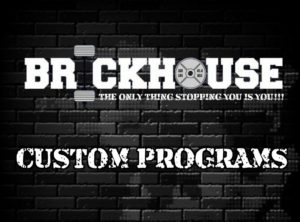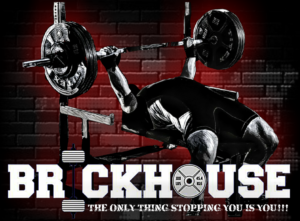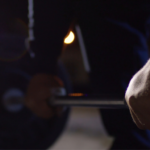Speed Strength vs. Strength Speed in Powerlifting
When it comes to powerlifting, understanding the difference between speed strength and strength speed can help lifters optimize their training for maximal performance. While both qualities involve force production and velocity, their emphasis differs, and each plays a distinct role in developing overall strength and explosiveness.
Speed Strength vs. Strength Speed: What’s the Difference?
- Speed Strength
- Speed strength refers to the ability to produce force rapidly. In other words, it is the capacity to apply force at high velocity.
- This quality is critical for explosive movements and developing rapid rate of force production, which can be useful in breaking through sticking points in lifts and improving overall bar speed.
- It is trained with lighter loads (typically 30-60% of one-rep max) and focuses on moving the bar as fast as possible.
- It can also be used with accommodating resistance such as bands or chains.
- Strength Speed
- Strength speed, on the other hand, focuses on moving heavier loads quickly. This is great for sports like weightlifting, shot putting football and of course powerlifting.
- This quality is crucial for overcoming heavy resistance and ensuring efficient force application in maximum effort lifts.
- It is trained with heavier loads (typically 70-90% of one-rep max) while still prioritizing bar speed and controlled acceleration.
Applying Speed Strength and Strength Speed to Powerlifting
Both speed strength and strength speed are essential for powerlifters, as they contribute to overall force production and lifting efficiency. A well-rounded training plan should include both elements to ensure maximal power output on the squat, bench press, and deadlift.
Below are sample workouts incorporating speed strength and strength speed for each lift:
Squat Workouts
- Speed Strength Focus:
- Box Squat: 8 sets x 2 reps @ 50-60% 1RM
- Chain or Banded Squats: 6 sets x 3 reps @ 40-50% 1RM + Chains or bands
- Jump Squats: 4 sets x 5 reps @ 30% 1RM
- Broad jumps 6 sets x 3 reps
- Strength Speed Focus:
- Squats: 5 sets x 3 reps @ 75-85% 1RM
- Tempo Squats (3-1-0): 4 sets x 3 reps @ 70-80% 1RM
- Belt Squat 4 sets x 6-8 reps @ 70-85%
- Bulgarian Split Squats: 3 sets x 6 reps per leg
Bench Press Workouts
- Speed Strength Focus:
- Banded Speed Bench Press: 9 sets x 3 reps @ 30-50% 1RM
- 2 Board Bench 6 sets x 2 rep @ 50-60%
- Plyometric Push-ups: 4 sets x 5 reps
- Medicine Ball Chest Throws: 3 sets x 8 reps
- Strength Speed Focus:
- Paused Bench Press: 5 sets x 3 reps @ 75-85% 1RM
- Close-Grip Bench Press: 4 sets x 4 reps @ 70-80% 1RM
- Floor Press: 3 sets x 5 reps @ 75-85% 1RM
- Dead Pin Press (just off chest) 6 sets 1 rep 75-90% 1RM
Deadlift Workouts
- Speed Strength Focus:
- Speed Deadlifts: 8 sets x 2 reps @ 50-60% 1RM (focus on explosive pull)
- Chain Deadlifts: 10 sets x 2 reps @ 40-50% 1RM
- Power Cleans: 4 sets x 3 reps
- Sandbag Over Bar: 12 sets 1 rep
- Strength Speed Focus:
- Deficit Deadlifts: 5 sets x 3 reps @ 75-85% 1RM
- Block Pulls: 4 sets x 3 reps @ 80-90% 1RM
- Romanian Deadlifts: 3 sets x 6 reps
- Heavy Farmer’s Carries: 3 sets x 20 yards
Progressive Overload for Speed Strength and Strength Speed
To continuously improve both speed strength and strength speed, a structured progression plan over a month can be followed:
Week 1-2:
- Speed Strength: Start with 50% 1RM for speed-focused lifts, aiming for maximal velocity on each rep.
- Strength Speed: Use 75% 1RM, focusing on controlled bar speed with heavy resistance.
Week 3:
- Speed Strength: Increase load to 55-60% 1RM while maintaining bar speed.
- Strength Speed: Increase to 80-85% 1RM, ensuring force production remains high.
Week 4:
- Speed Strength: Maintain 55-60% 1RM but increase set volume slightly to drive adaptation.
- Strength Speed: Work with 85-90% 1RM for lower reps to improve max strength while preserving bar speed.
By systematically increasing intensity and volume, powerlifters can develop both explosive power and maximal strength, leading to improved performance in all three competition lifts.
Depending on the level of the athlete, I would recommend a planned De-load every 3-4 weeks or ungulate the training.
Conclusion
Both speed strength and strength speed play critical roles in powerlifting performance. Speed strength enhances explosiveness and bar speed, while strength speed improves force production under heavy loads. By incorporating both into a structured training program and progressively overloading across a month, powerlifters can maximize their lifting efficiency, improve sticking points, and ultimately increase their one-rep maxes in the squat, bench press, and deadlift.
Recommended products
-
Brickhouse Custom Programs
$200.00 -
Consultation
$100.00 -
Brickhouse Power Kick-Ass Colombian Coffee
Price range: $17.99 through $49.99
Recommended products
-
Consultation
$100.00 -
Brickhouse Custom Programs
$200.00 -
Brickhouse Bench Program
$165.00 -
Brickhouse Power Kick-Ass Colombian Coffee
Price range: $17.99 through $49.99











0 Comments